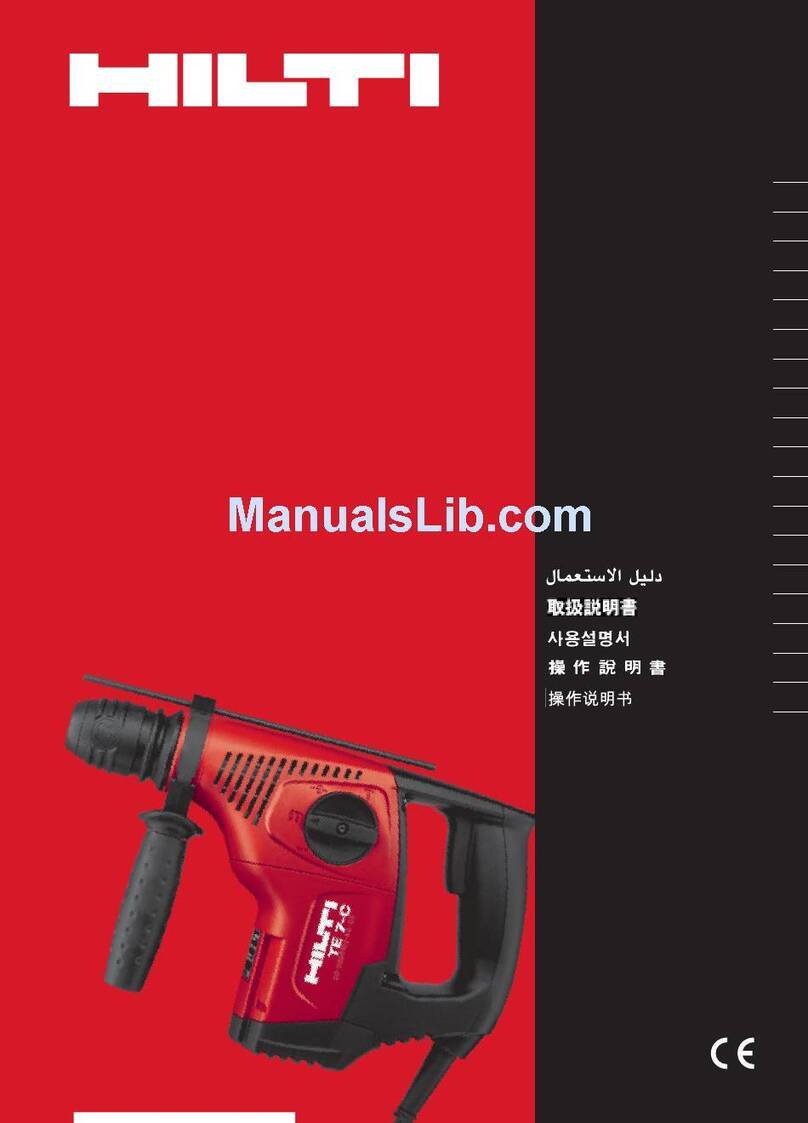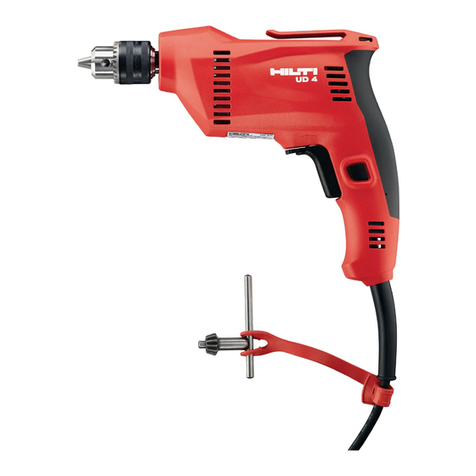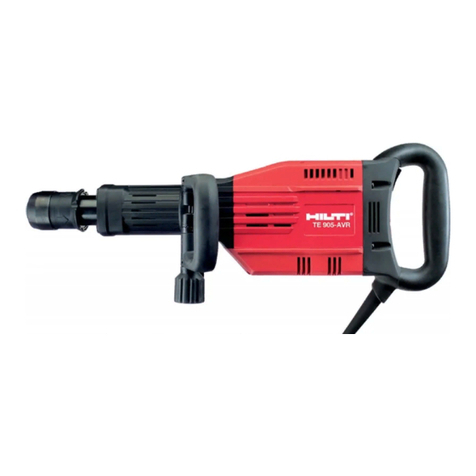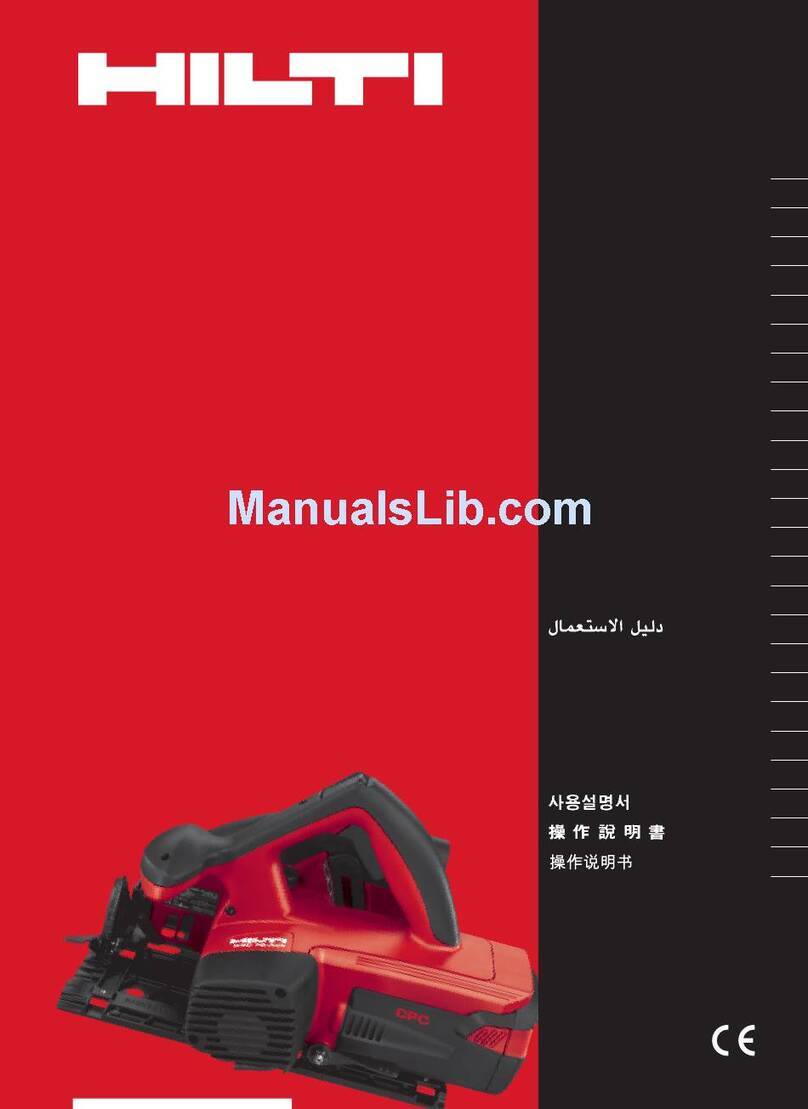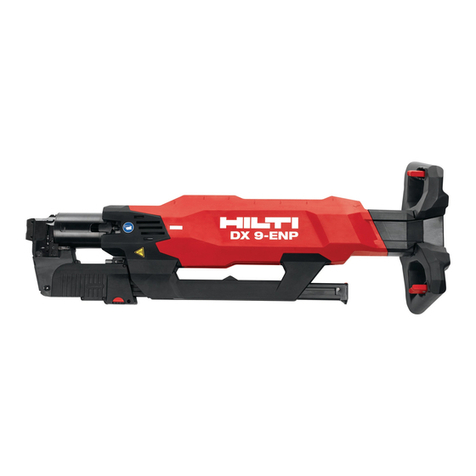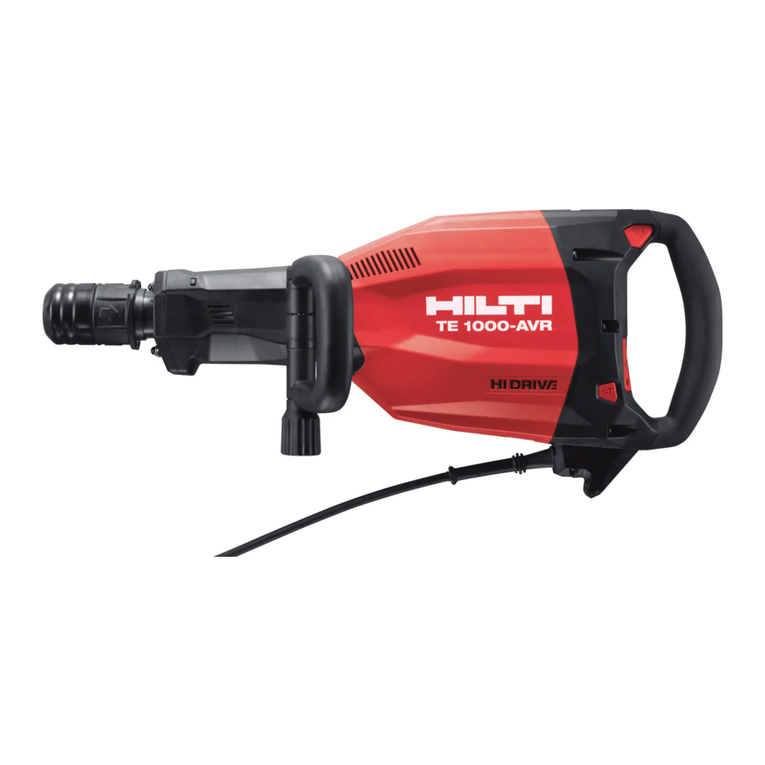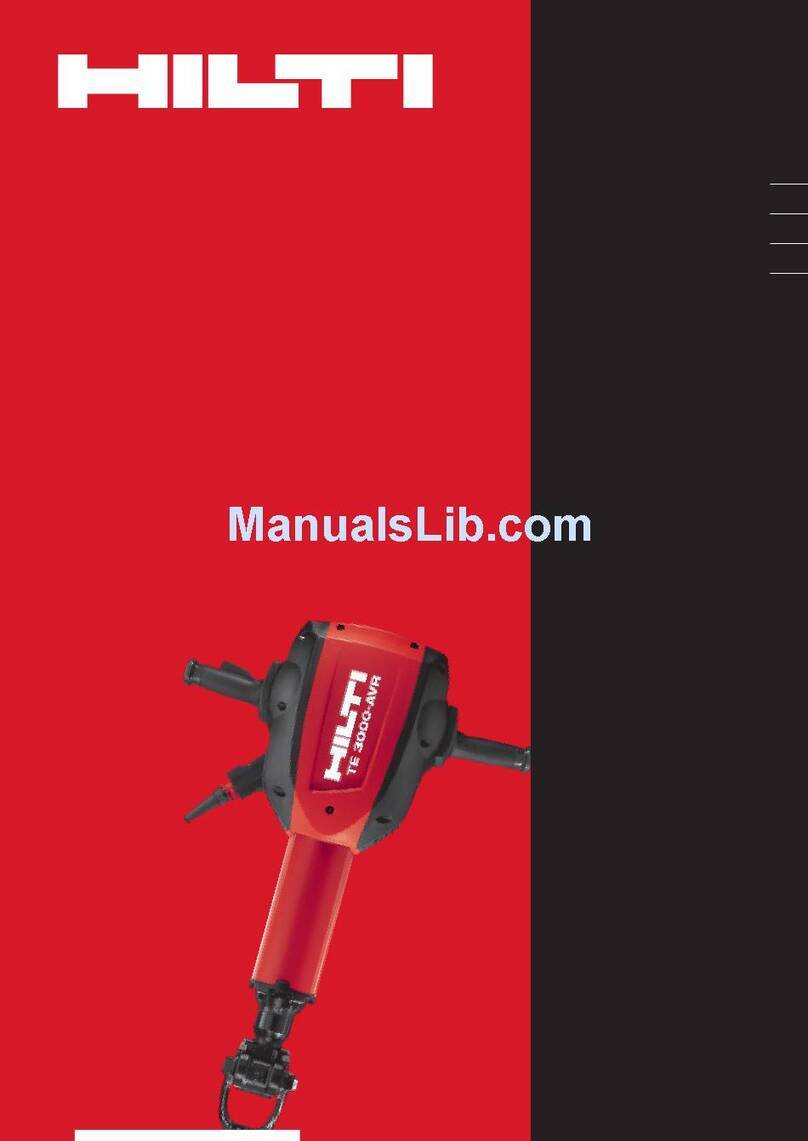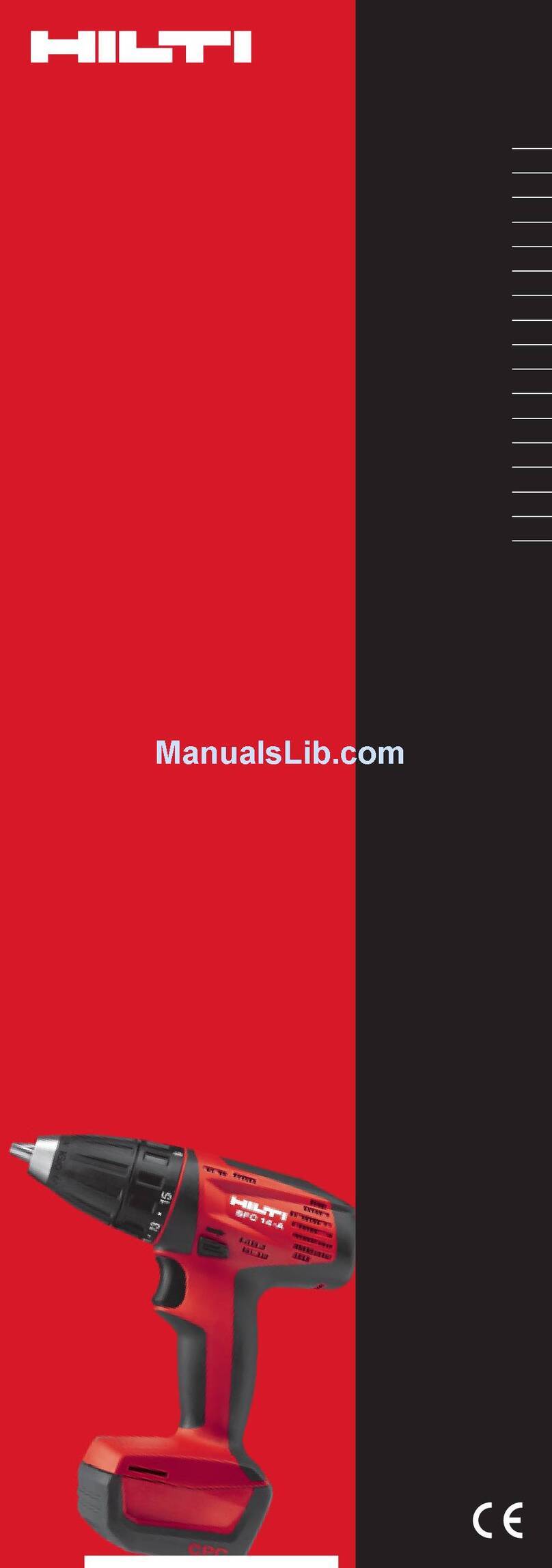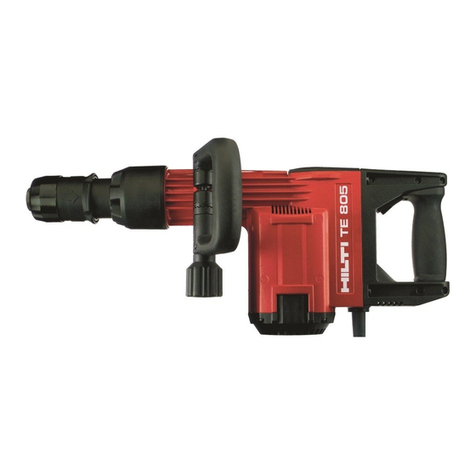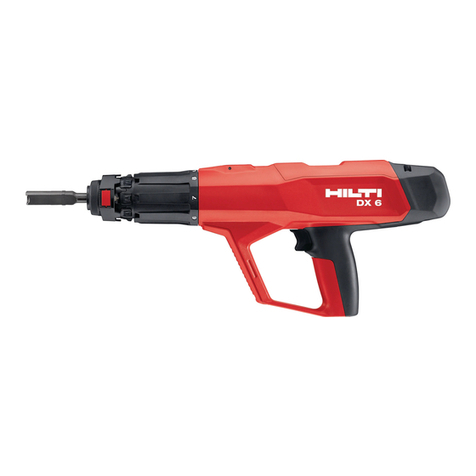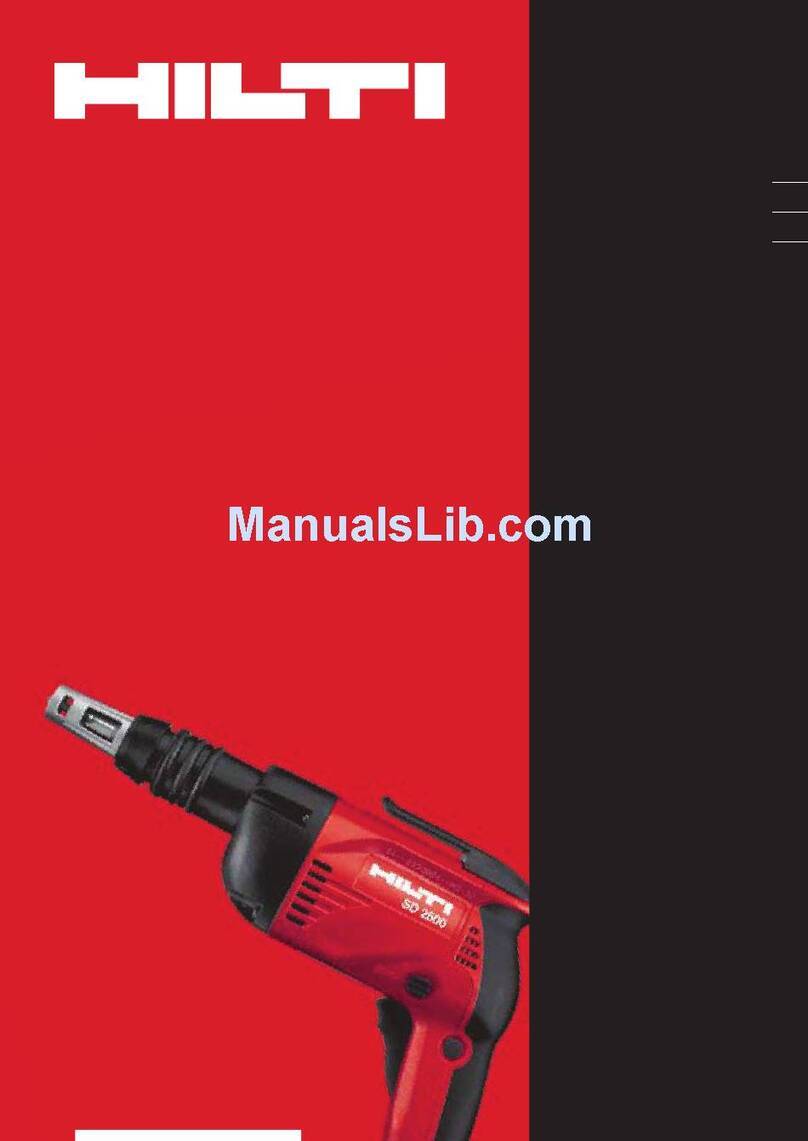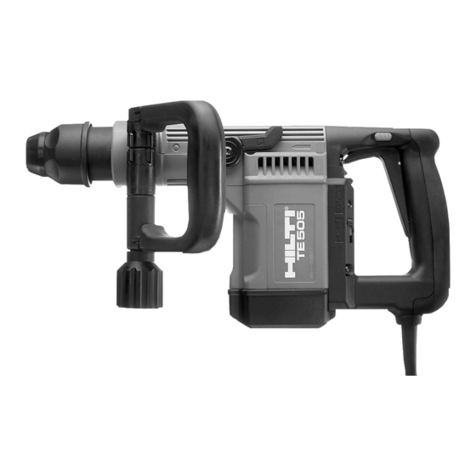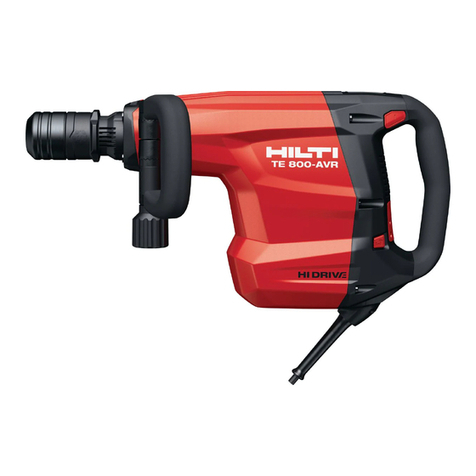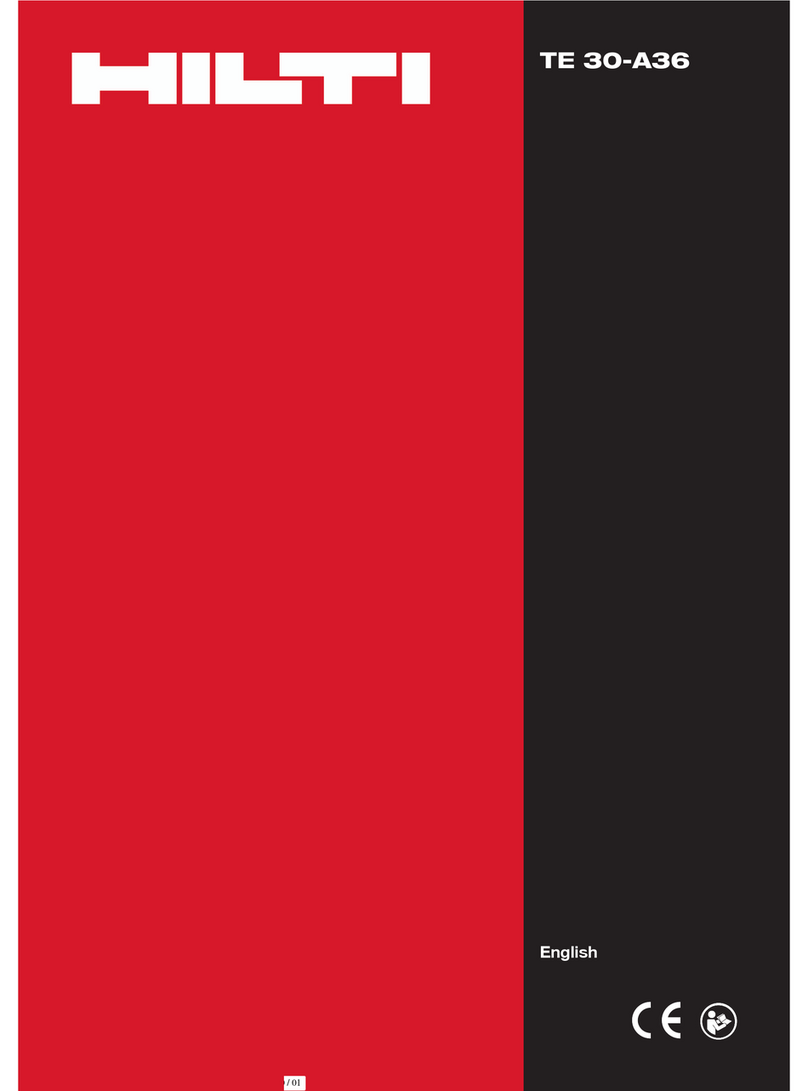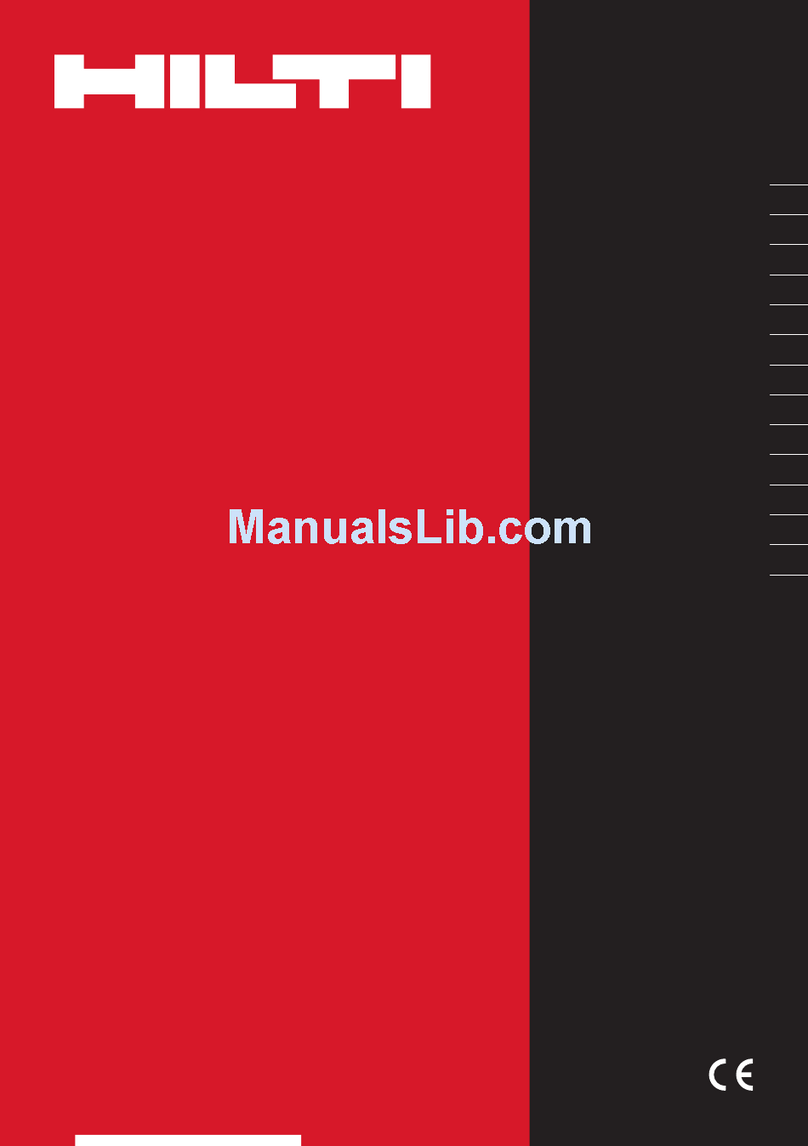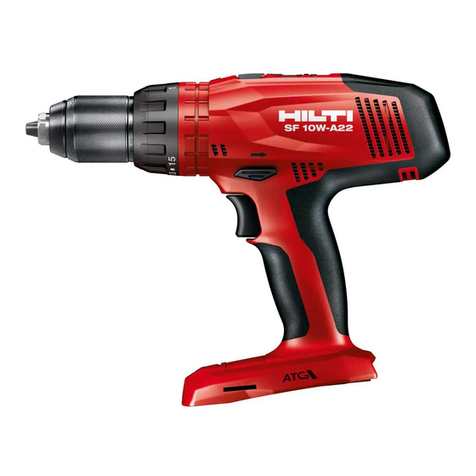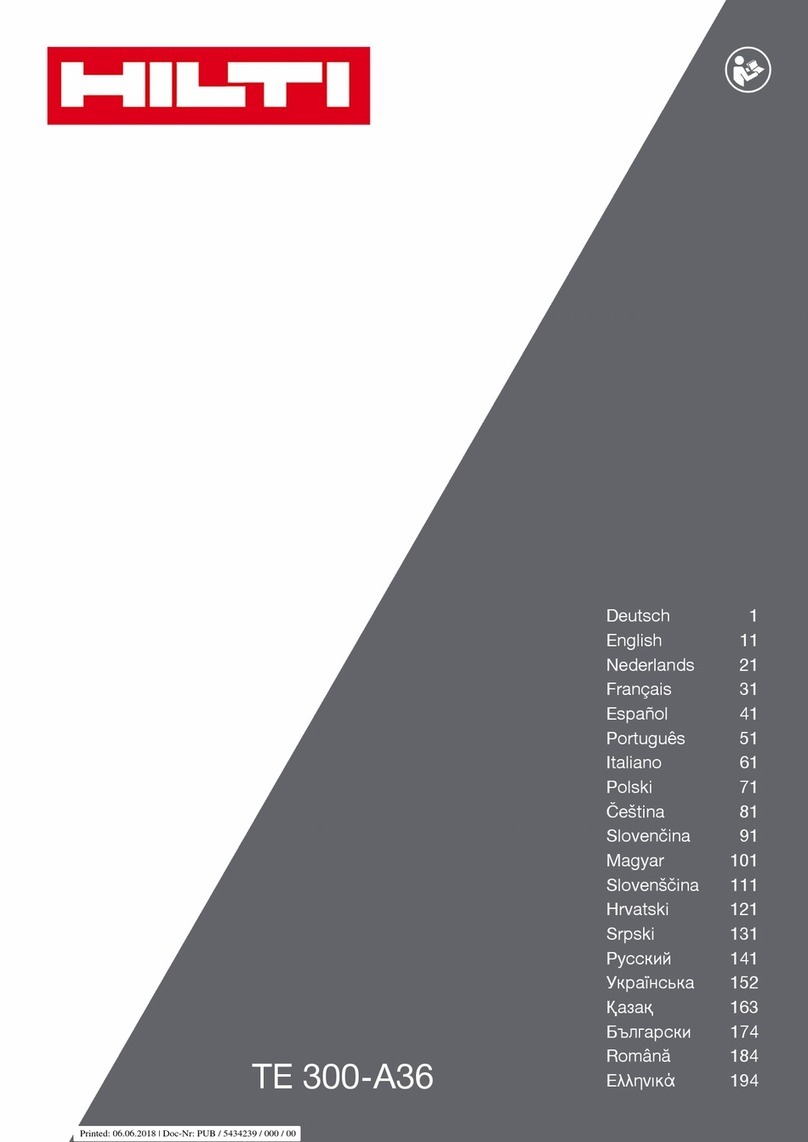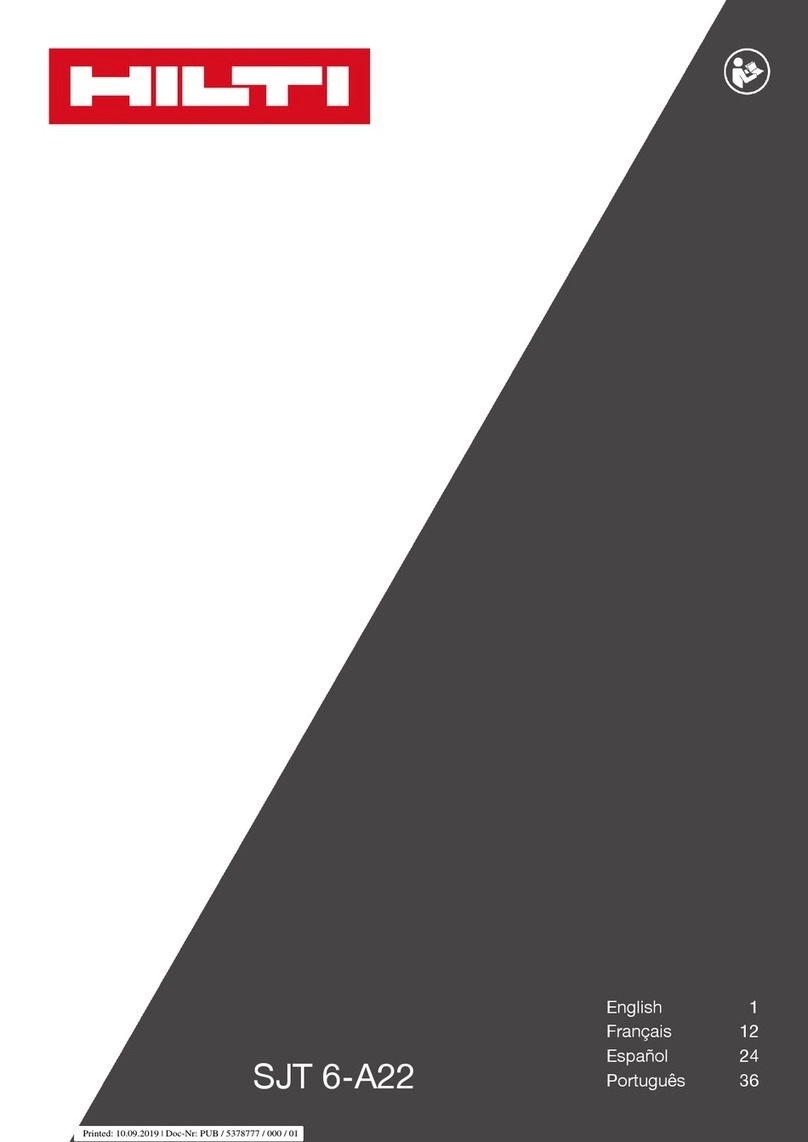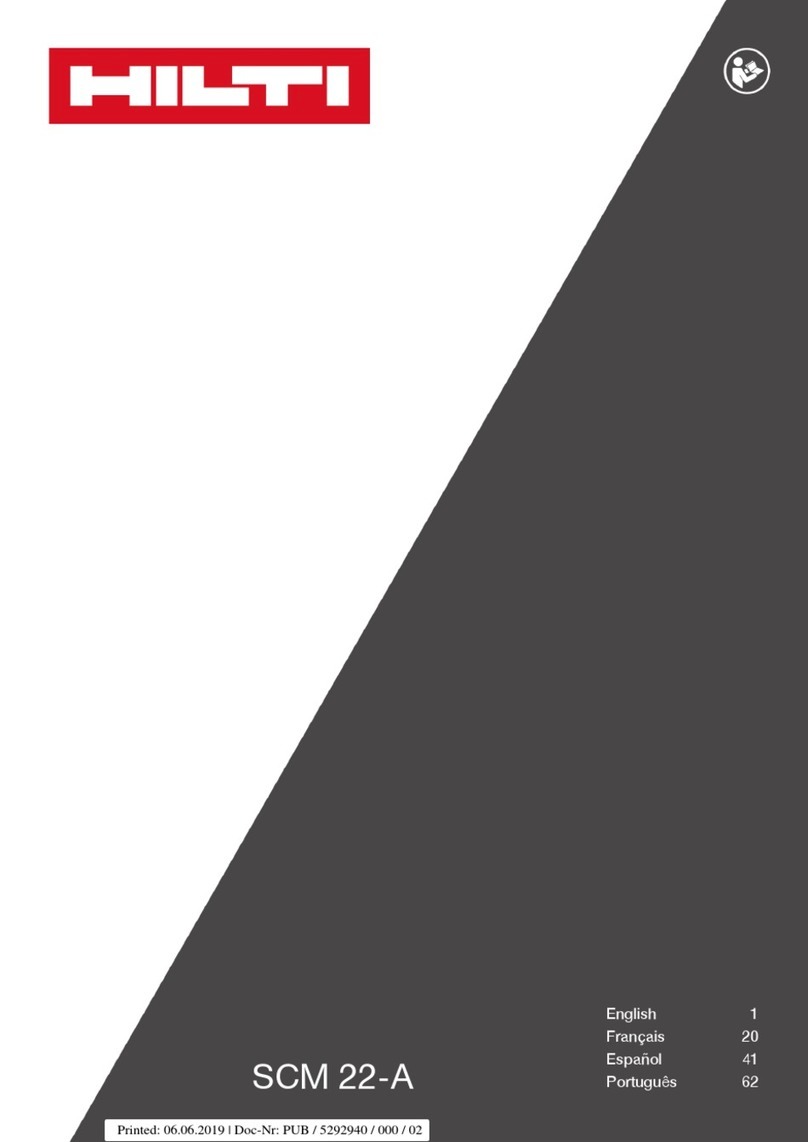
are connected and properly used. Use of dust
collection can reduce dust-related hazards.
5.1.4 Power tool use and care
a) Do not force the power tool. Use the correct
power tool for your application. The correct power
tool will do the job better and safer at the rate for
which it was designed.
b) Do not use the power tool if the switch does not
turn it on and off. Any power tool that cannot be
controlled with the switch is dangerous and must be
repaired.
c) Disconnect the plug from the power source
and/or the battery pack from the power tool
before making any adjustments, changing
accessories, or storing power tools. Such
preventive safety measures reduce the risk of
starting the power tool accidentally.
d) Store idle power tools out of the reach of chil-
dren and do not allow persons unfamiliar with the
power tool or these instructions to operate the
power tool. Power tools are dangerous in the hands
of untrained users.
e) Maintain power tools. Check for misalignment or
binding of moving parts, breakage of parts and
any other condition that may affect the power
tool’s operation. If damaged, have the power tool
repaired before use. Many accidents are caused by
poorly maintained power tools.
f) Keep cutting tools sharp and clean. Properly main-
tained cutting tools with sharp cutting edges are less
likely to bind and are easier to control.
g) Use the power tool, accessories and tool bits etc.
in accordance with these instructions, taking into
account the working conditions and the work to
be performed. Use of the power tool for opera-
tions different from those intended could result in a
hazardous situation.
5.1.5 Service
a) Have your power tool serviced bya qualified repair
person using only identical replacement parts.
This will ensure that the safety of the power tool is
maintained.
5.2 Additional safety rules
5.2.1 Safety rules for cutting with diamond discs
a) Read all safety warnings, instructions, illustra-
tions and specifications provided with this power
tool. Failure to follow all instructions listed below may
result in electric shock, fire and/or serious injury.
b) Always use the guard provided with the tool. The
guard must be securely attached to the power
tool and positioned for maximum safety, so the
least amount of diamond wheel is exposed to-
wards the operator. The guard helps to protect the
operator from broken diamond wheel fragments and
accidental contact with the diamond wheel.
c) Use only diamond cut-off wheels for your power
tool. Just because an accessory can be attached to
your power tool, it does not assure safe operation.
d) The rated speed of the diamond wheel must be
at least equal to the maximum speed marked on
the power tool. Diamond wheels running faster than
their rated speed can break and fly apart.
e) Diamond wheels must be used only for recom-
mended applications. For example: Do not grind
with the side of cut-off wheel. Abrasive cut-off
wheels are intended for peripheral grinding, side
forces applied to these wheels may cause them to
shatter.
f) Always use undamaged wheel flanges that are
of the correct diameter for your selected wheel.
Proper wheel flanges support the wheel thus redu-
cing the possibility of diamond wheel breakage.
g) The outside diameter and thickness of your dia-
mond wheel must be within the capacity rating of
your power tool. Incorrectly sized diamond wheels
cannot be adequately guarded or controlled.
h) The arbour size of diamond wheels and flanges
must properly fit the spindle of the power tool.
Diamond wheels and flanges with arbour holes that
do not match the mounting hardware of the power
tool will run out of balance, vibrate excessively and
may cause loss of control.
i) Do not use damaged diamond wheels. Before
each use, inspect the diamond wheels for chips
and cracks. If power tool or diamond wheel is
dropped, inspect for damage or install an undam-
aged wheel. After inspecting and installing the
diamond wheel, position yourself and bystand-
ers away from the plane of the rotating diamond
wheel and run the power tool at maximum no-load
speed for one minute. Damaged diamond wheels
will normally break apart during this time.
j) Wear personal protective equipment. Depending
on application, use face shield, safety goggles or
safety glasses. As appropriate, wear dust mask,
hearing protectors gloves and shop apron cap-
able of stopping small abrasive or workpiece
fragments. The eye protection must be capable of
stopping flying debris generated by various opera-
tions. The dust mask or respirator must be capable of
filtrating particles generated by your operation. Pro-
longed exposure to high-intensity noise may cause
hearing loss.
k) Keep bystanders a safe distance away from work
area. Anyone entering the work area must wear
personal protective equipment. Fragments of
workpiece or of a broken wheel may fly away and
cause injury beyond immediate area of operation.
l) Hold the power tool by insulated gripping surfaces
only, when performing an operation where the
diamond wheel may contact hidden wiring or its
own cord. Wheelcontactinga“live”wiremaymake
exposed metal parts of the power tool “live” and
shock the operator.
m) Position the cord clear of the spinning diamond
wheel. If you lose control, the cord may be cut or
snagged and your hand or arm may be pulled into
the spinning diamond wheel.
n) Never lay the power tool down until the diamond
wheel has come to a complete stop. The spinning
en
12
Printed: 07.07.2013 | Doc-Nr: PUB / 5128910 / 000 / 00
